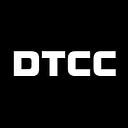Collaboration: The Key to a Successful T+1 Transition
With the transition to T+1 one month past, a panel of industry experts met to discuss to the biggest industry challenges, lessons learned and what lies ahead for the securities settlement markets during DTCC’s Navigating Beyond T+1 virtual event.
David Kirby, DTCC Managing Director, Global Head of Bank and Broker Dealer Coverage moderated the panel which included John Abel, DTCC Executive Director of Clearance & Settlement Product Management, Mara Gauger, Deloitte Senior Manager Banking & Capital Markets, Anthony Macchiarulo, SIFMA Assistant Vice President Financial Services Operations and Assistant General Counsel and RJ Rondini, ICI Director of Securities Operations.
Kirby noted that post-T+1, affirmation rates have increased to 94% from 73% in January. While there was much concern about a spike in fail rates, they remain basically unchanged from pre-T+1 levels. Most notable is the significant decrease in the Clearing Fund Requirement, down 28% from the last quarter. Abel added that the data, seem in other DTCC analysis, is in line with business-as-usual metrics without any significant deviations seen from ITP, DTC or NSCC. And while markets have not seen any significant market event since the cycle was shortened, the Juneteenth holiday — specific to the U.S. — went smoothly, as did June’s triple witching and the MSCI quarterly rebalancing.
Gauger added that as firms move into the new T+1 business-as-usual environment, the process automation implemented by firms will be a key factor in keeping these metrics constant and improving upon them.
Lessons From the Successful U.S. Transition
In late May, the U.S. was joined by Canada, Mexico, Argentina, Peru and Jamaica in a successful move to T+1. Across the pond, the United Kingdom (UK) and European Union (EU) are in the early stages of T+1 planning.
In the UK, His Majesty’s Treasury has approved the creation of the UK Accelerated Settlement Task Force (ASTF) to begin industry collaboration to identify necessary changes and decisions needed to move to a T+1 settlement cycle. The UK is in an advanced stage with technical cub groups being created, in order to produce recommendations on how and when the UK should move. It is expected the UK ASTF will publish its final recommendations in September 2024.
The EU is moving at a slightly slower pace, however consultation papers have been published, and responded to, as well as industry events hosted by regulators and policy makers. There is definite appetite for the EU to migrate to a T+1 cycle. Whether the UK and EU can align on a similar time frame remains unclear. Both the UK and EU have closely followed the collaboration, planning and preparation done by the U.S., which included a steering committee, playbook, working groups, client engagement, testing and a joint command center during the transition.
Rondini added that DTCC’s dashboard provided significant help to firms as it enabled them to highlight trouble spots and focus their energy.
“Project pre-work including the creation of industry working groups, the development of the playbooks and other documentation, proactive communication, and nine months of industry testing which included every major member, were all key to the successful implementation and will be used in future models for other large industry changes,” Abel said.
Kirby added, “The global financial community — broker/dealers, vendors, custodians — put a tremendous amount of work into client education and this really paid off.”
Key Benefits and What’s Next
Panelists agreed that there have been positive ripple effects across the industry due to the successful move to T+1, including greater operational efficiencies, substantial lower margin requirements, improved liquidity, and most importantly, reduced risk in the financial system.
The move has sparked discussion globally and as other markets reduce their settlement cycles, the benefits will multiply. Macchiarulo noted a recent speech in the UK by SEC Chair Gary Gensler where he emphasized the benefits of shortened cycle as well as the smooth transition in the U.S. However, the EU has a more complex financial infrastructure, with more exchanges, CCPs and central security depositories.
As for a further shortening of the settlement cycle to T+0 — a goal also mentioned by Chair Gensler — panelists again agreed that the move would be more of a major shift that would require a significant investment by the entire industry and should also be more globally aligned. Macchiarulo added that the success of T+1 does not necessarily mean that the next logical step is T0.
Maintaining the benefits of netting will need to be a key consideration in a T+0 environment, as will the need to evaluate existing batch processes. Abel concluded, saying that T0 is a much different conversation than T+1. “We need to define the T0 processing model, think about what it means to the multiple business processes operating in our Industry to fully understanding the issues and benefits and determine the next logical path.”
